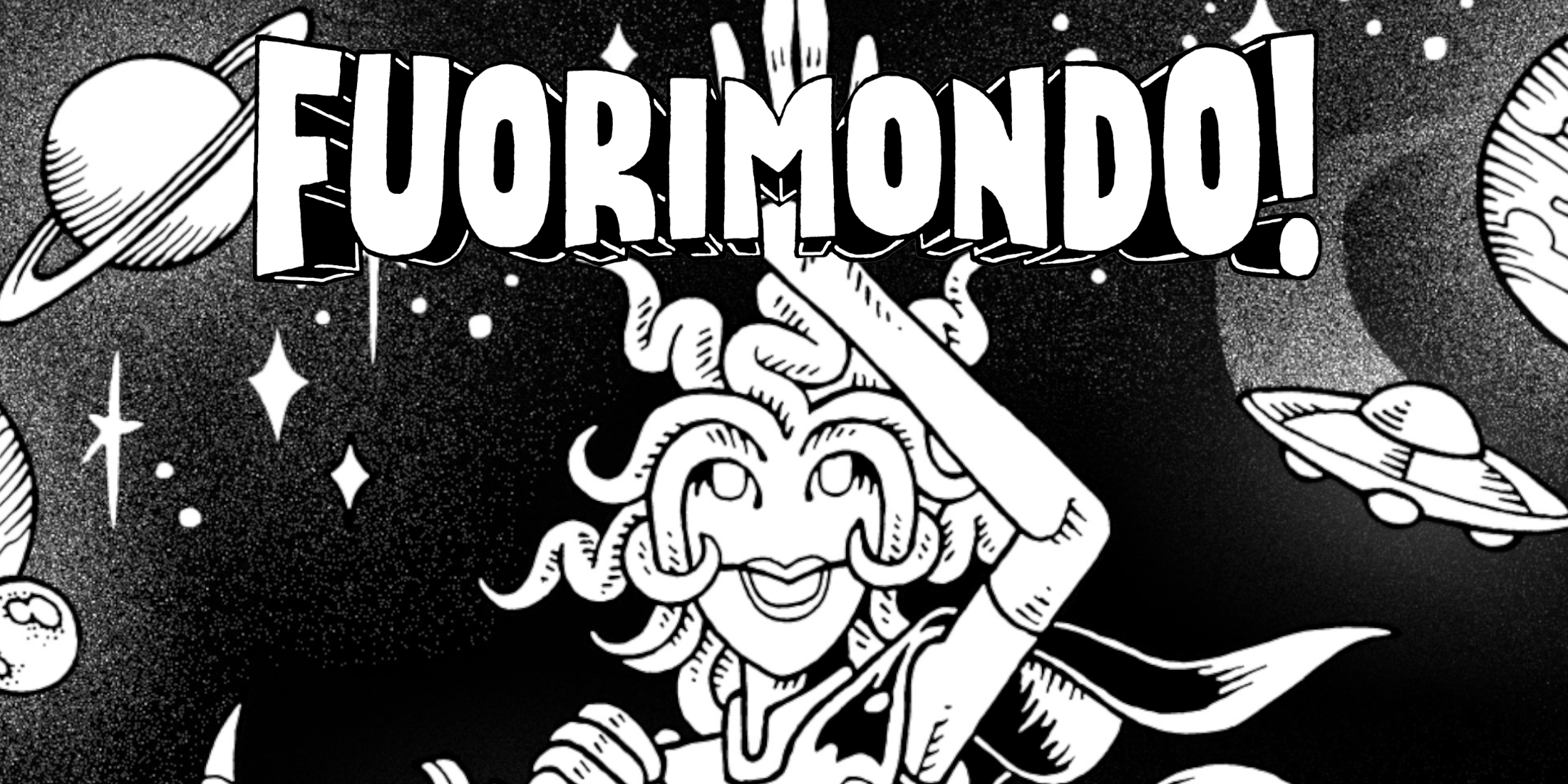Since our earliest days, humans have dreamed about what lies in the inky blackness of space. TTRPG designers are no exception, as loads of new sci-fi TTRPG hit shelves each year, each presenting a unique take on the genre and its ideas. One such game is Fuorimondo, a sci-fi TTRPG that shakes up the usual formula in several memorable ways.
One of the most instantly noticeable things about Fuorimondo is its flexibility. Notably, the book has instructions for GM and GM-Free play and a set of special collaborative rules where players share a pool of characters, meaning that this game can easily be modified to work with whatever group composition you have at your table, setting it apart from similar sci-fi TTRPG games.
Fuorimondo’s Flexible Character System

This flexibility also shines through during character creation, as the system is remarkably flexible. First, the player will roll to find their character’s Wits, Dexterity, Stamina, and Sociability stats. The character can then be given up to 4 traits, covering anything from extra limbs to the ability to fly. Characters also get 4 Skills (things they’re great at), 2 Flubs (tasks they suck at), as well as several pieces of helpful equipment. Finally, each character starts with one to three contacts. Contacts are NPCs the character has a relationship with, from high-ranking government officials to bartenders and mechanics, all of whom can do favors for the character.
This open system allows players to create any character they can dream of, from recreating beloved sci-fi icons to building completely original character concepts. But Fuorimondo balances this depth and openness with an intuitive simplicity that makes the process a breeze. This is fantastic as it means that easily overwhelmed players or those with little time can go from empty sheet to playable character within 20 minutes, while players with more time can spend hours tweaking their character and coming up with bespoke skills, traits, and contacts until they build their ultimate sci-fi hero.
Energy Points Let Players Shape Their Story
The highlight of Fuorimondo is its conflict resolution system, as it gives players immense control over the story’s progression. When a player has to make an action, they have two choices. The first is to spend Energy Points. Each of the core four stats has a separate pool of Energy Points, and the amount of points the player spends decides how successful the action is. Three points net the player a perfect success, two leads to success with consequences, and spending a single point leads to success with several consequences.
However, if the player doesn’t want to use points, they can throw themselves before the mercy of the dice by making a D6-based Luck roll with its own degrees of success and failure. This system makes roleplay much easier, as players don’t have to worry about justifying why their character failed a task they’re meant to be great at, a common issue in many dice-based TTRPGs. It also allows players to easily shape the narrative, guaranteeing that the moments that matter to them and their character get the spotlight time they deserve.
The Brilliance Of Tight Spots

Encounters with hazards or foes are dubbed Tight Spots. When a Tight Spot begins, the game switches to a turn-based system. The PCs may make two actions each turn, from moving to inflicting conditions on their foes. But, during Tight Spots, all situations are resolved via Luck Rolls, giving these sequences plenty of tension.
This section of Fuorimondo introduces two fascinating elements. First, the book notes that Tight Spots don’t have to be combat encounters. Tight Spots can be any situation where one character attempts to overcome something, be it a psychological showdown or a verbal sparring session. Secondly, the rules note that a character’s Sociability stat goes down whenever they kill or injure another being.
This is further enhanced by the game’s stress and panic system. Whenever a character fails an action during a Tight Spot, they gain one stress point. If this value becomes too high, the character gets the Panicked condition, making it harder for them to perform actions.
These elements work in tandem to perfectly set the game’s tone. Fuorimondo isn’t a Warhammer TTRPG where characters are human tanks that go planet to planet, kicking everything that looks at them funny. Fuorimondo is a game where space is harsh and confusing, and bad things could happen at any moment. Because of this, players must consider their actions carefully, as even the shortest Tight Spot could have long-term consequences, encouraging players to think about all their options before diving headfirst into a situation and making moments where characters are forced into Tight Spots all the more dramatic.
Finding Family As You Progress

Another fascinating thing about Fuorimondo is how it handles character progression. Each player can take one of four options at the end of each adventure or session. On the more basic end, players can improve their current character by boosting their stats or giving them a new skill or flub. The other two options allow the player to gift their new character a new contact or turn an existing contact into a new player character that anyone in the group can take control of.
This final option is a welcome addition because gathering new crew members is a crucial plot point in most space operas, but it isn’t something that most sci-fi TTRPGs allow players to do. This mechanic also encourages the players and GM to think about the Contacts as whole people rather than relegating them to abstract favor vending machines. Something that once again encourages players to collaborate and take an active role in shaping the game world.
A Retro Sci-Fi Art Style

The entire product is tied together by the book’s fantastic art style, which features a fun mix of sci-fi characters, all depicted in a pleasingly chunky art style. This art perfectly complements the game, as each piece is packed with unique-looking aliens in intriguing scenarios, capturing the openness and creativity that makes Fuorimondo so gripping.
The art frequently reminds me of cheap sticker sets from the 1990s and early 2000s, as many featured this art style alongside original characters that were “loving tributes” to some of sci-fi’s most famous characters. My favorite image is the Darth Vader-esq character, as he looks like a villain from one of the many low-budget European-made Star Wars knock-offs that can be found floating around Flea markets and second-hand VHS stores.
Fuorimondo is a fantastic sci-fi TTRPG that walks a very tight line. On one hand, the game is very flexible and open, allowing every group to tweak their experience to fit their needs and desires. On the other hand, the game is built on a solid mechanical base that gently encourages players to roleplay and world-build in a way that evokes the feeling of a specific part of the sci-fi genre. These two sides come together perfectly at the table, making the entire game feel effortless, making this a fantastic title for people looking to dip their toes into the world of TTRPGs.


